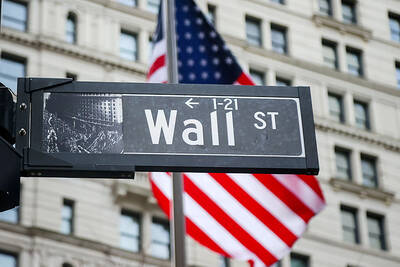Thirty local firms made this year’s Global Innovation 1000 study — one fewer than last year — as global firms assign more importance to research and development (R&D) to stay competitive and profitable, accounting firm PricewaterhouseCoopers LLP (PwC) said in a report on Tuesday.
R&D spending totaled NT$444.3 billion (US$14.45 billion) in Taiwan, a 0.2 percent increase from last year, which accounted for 3.3 percent of their combined revenue, PwC Taiwan said.
The growth lags far behind an 11.4 percent increase for the world’s top 1,000 companies, which spent a record US$782 billion on R&D this year, PwC Taiwan executive vice president Paul Liu (劉鏡清) said.
Revenues for the 1,000 firms also grew 11.4 percent annually, even though the newest figures left R&D intensity, or innovation spending as a percentage of revenue, unchanged at 4.5 percent from last year, the annual survey said.
However, the 88 high-leverage innovators saw their sales advancing 2.6 times as fast as the pool, while their market value soared 2.9 times higher, it said.
Local firms Taiwan Semiconductor Manufacturing Co (TSMC, 台積電), Pegatron Corp (和碩), Pou Chen Corp (寶成工業) and Siliconware Precision Industries Co (矽品精密) were recognized as high-leverage innovators, the survey said.
With regard to R&D spending, Hon Hai Precision Industry Co (鴻海精密) leads the pack in Taiwan, followed by TSMC, MediaTek Inc (聯發科), Delta Electronics Inc (台達電) and Asustek Computer Inc (華碩), it said.
R&D spending by the top 20 companies reached US$214.5 billion, accounting for 27.4 percent of the total, the survey said.
For the second year in a row, Amazon.com Inc led the top-20 list with R&D expenditure of US$22.6 billion, up a massive 40.6 percent from last year, it found. Alphabet Inc was second, spending US$16.2 billion.
Facebook Inc posted the biggest climb on the top-20 list, up six places from its position last year to No. 14, it said.
All surveyed regions increased their R&D expenditure, with China staging the biggest increase of 34 percent, followed by Europe’s 14 percent gain and North America’s 7.8 percent increase, the survey said.
R&D spending rose in the computing and electronics, healthcare, auto, and software and Internet — the four industries that dominate the top 20 list, it said.
The survey observed a US$13 billion R&D surge in spending in computing and electronics, from flat spending over the previous five years, almost a third of which was attributable to increased spending at Samsung Electronics Co and Apple Inc.

GROWING OWINGS: While Luxembourg and China swapped the top three spots, the US continued to be the largest exposure for Taiwan for the 41st consecutive quarter The US remained the largest debtor nation to Taiwan’s banking sector for the 41st consecutive quarter at the end of September, after local banks’ exposure to the US market rose more than 2 percent from three months earlier, the central bank said. Exposure to the US increased to US$198.896 billion, up US$4.026 billion, or 2.07 percent, from US$194.87 billion in the previous quarter, data released by the central bank showed on Friday. Of the increase, about US$1.4 billion came from banks’ investments in securitized products and interbank loans in the US, while another US$2.6 billion stemmed from trust assets, including mutual funds,

Micron Memory Taiwan Co (台灣美光), a subsidiary of US memorychip maker Micron Technology Inc, has been granted a NT$4.7 billion (US$149.5 million) subsidy under the Ministry of Economic Affairs A+ Corporate Innovation and R&D Enhancement program, the ministry said yesterday. The US memorychip maker’s program aims to back the development of high-performance and high-bandwidth memory chips with a total budget of NT$11.75 billion, the ministry said. Aside from the government funding, Micron is to inject the remaining investment of NT$7.06 billion as the company applied to participate the government’s Global Innovation Partnership Program to deepen technology cooperation, a ministry official told the

Taiwan Semiconductor Manufacturing Co (TSMC, 台積電), the world’s leading advanced chipmaker, officially began volume production of its 2-nanometer chips in the fourth quarter of this year, according to a recent update on the company’s Web site. The low-key announcement confirms that TSMC, the go-to chipmaker for artificial intelligence (AI) hardware providers Nvidia Corp and iPhone maker Apple Inc, met its original roadmap for the next-generation technology. Production is currently centered at Fab 22 in Kaohsiung, utilizing the company’s first-generation nanosheet transistor technology. The new architecture achieves “full-node strides in performance and power consumption,” TSMC said. The company described the 2nm process as

JOINT EFFORTS: MediaTek would partner with Denso to develop custom chips to support the car-part specialist company’s driver-assist systems in an expanding market MediaTek Inc (聯發科), the world’s largest mobile phone chip designer, yesterday said it is working closely with Japan’s Denso Corp to build a custom automotive system-on-chip (SoC) solution tailored for advanced driver-assistance systems and cockpit systems, adding another customer to its new application-specific IC (ASIC) business. This effort merges Denso’s automotive-grade safety expertise and deep vehicle integration with MediaTek’s technologies cultivated through the development of Media- Tek’s Dimensity AX, leveraging efficient, high-performance SoCs and artificial intelligence (AI) capabilities to offer a scalable, production-ready platform for next-generation driver assistance, the company said in a statement yesterday. “Through this collaboration, we are bringing two